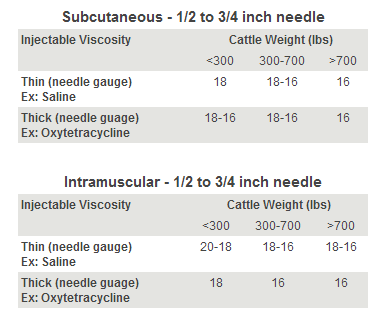Beef Quality Assurance: Does it Really Matter at Branding?

By: Adele Harty and Robin Salverson, SDSU Extension
Branding season is an important time of the year, not only for cattle health and well-being, but as a time for networking and fellowship with neighbors. With that networking comes a great responsibility to continue to work to provide a safe and wholesome product for the consumer. Producers need to be aware of and follow proper Beef Quality Assurance (BQA) guidelines during brandings and communicate that to their branding crew, especially in the administration of injections.
Below is an overview of the Steps in Administering Injections Properly:
- Select the right product for your need.
- Work with your veterinarian to determine what product(s) are needed for your cattle.
- Read the label and determine the dosage to be given, timing of administration, and route of administration.
- Don’t combine vaccines in the same syringe.
- Use transfer needles if a product needs to be reconstituted, this will be done with the Modified Live Vaccines (MLV). Proper equipment is key to success.
- Mix thoroughly. Rolling the bottle is preferred to shaking to decrease the number of bubbles formed in the product.
- Don’t mix too much of a MLV at once because once the product is mixed it needs to be used within hours to ensure efficacy. Read the label to determine the maximum time a product can be mixed before it needs to be discarded.
- To prevent cross-contamination mark and separate syringes so that the same vaccine is always in the syringe labeled for that vaccine.
- Keep vaccines out of the direct sunlight or extreme temperatures to avoid degradation of the vaccine.
- Get air out of syringes because injecting air into the animal could prove fatal if it gets into the bloodstream.
- Restrain animals properly to decrease stress and improve the accuracy of proper injection location.
- Choose the right needle. See table.
- Select best route of administration. If the product is labeled for both Intramuscular(IM) and Subcutaneous (SQ) administration, SQ use is preferable as there is less chance for an injection site lesion that can negatively impact meat quality and tenderness.
- Choose best site of administration. Give all injections in the neck region. See diagram.
- When giving multiple injections, keep all vaccinations at least 4 inches apart. This is challenging with calves, however, keeping them apart is important to get the best response from our vaccines. If more than one person is giving shots, either chalk mark where you gave the shot or discuss beforehand where each vaccinator will be giving their shot. Chalking calves is also helpful so you don’t revaccinate an animal when there are multiple calves on the ground.
- Use a proper injection technique, which means tenting for subcutaneous. Never administer more than 10 cc into any one site.
- Change needles frequently, every 10 to 20 animals. A good rule of thumb is to change needles before refilling the vaccine gun to avoid transferring contamination into vaccine bottles or have one clean needle that is used to draw the vaccine from the bottle.
- Sanitation is essential as it helps reduce the risk of spreading infection, and reduces injection site reactions.
- Don’t clean syringes used for modified live vaccines (MLV) with disinfectants as the disinfectant can kill the vaccine and render it ineffective. Use hot water to clean these syringes.
- Keep Accurate Records.
- Individual animal or pen ID
- Date treated
- Product administered
- Including name, company, product lot and serial number
- Dosage
- Route of administration
- Withdrawal time and earliest date withdrawal period will be cleared
- Processor name and/or initials








